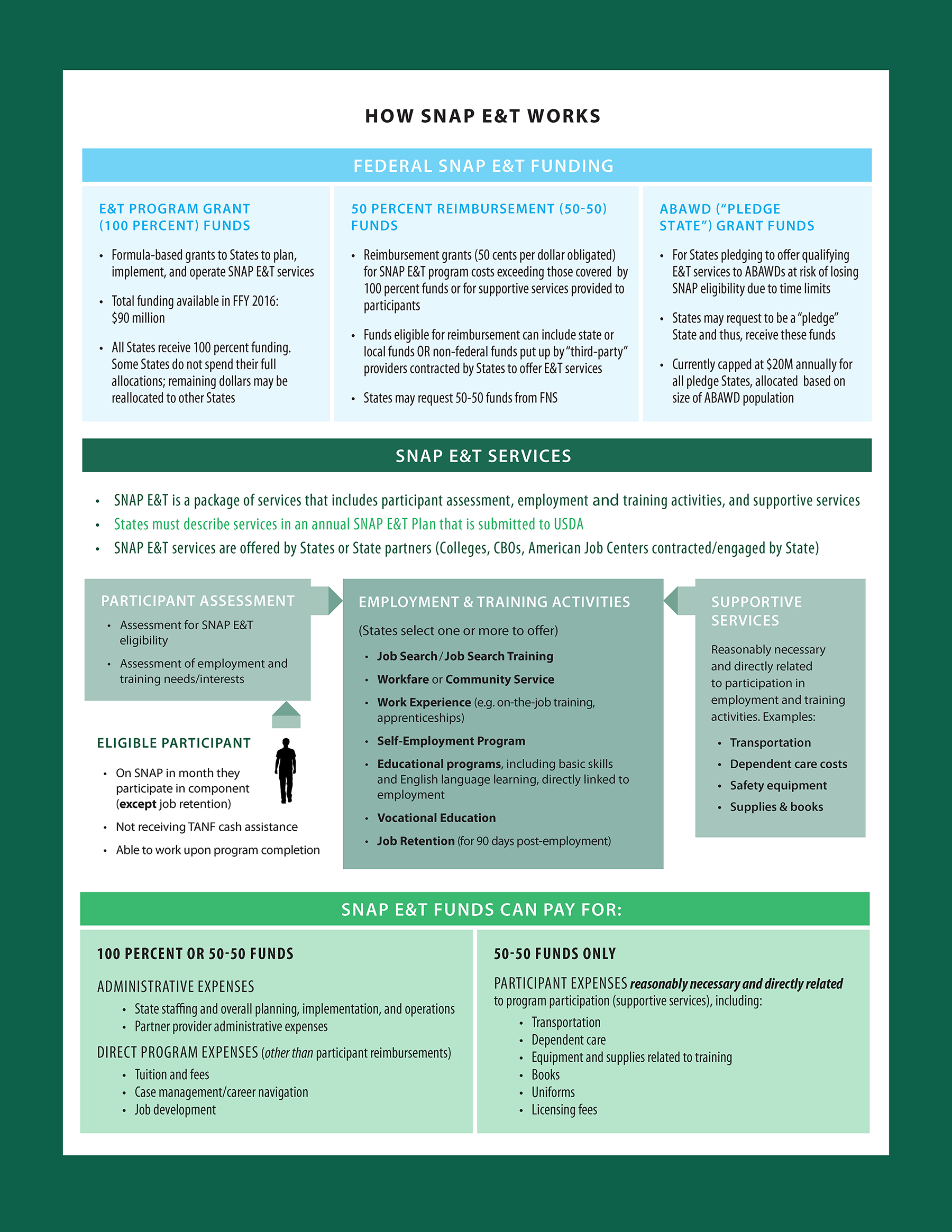SNAP Employment and Training (SNAP E&T) can help SNAP participants gain skills, training, or work experience to increase their ability to obtain regular employment that leads to economic self-sufficiency. States are required to operate SNAP E&T programs, and are provided funding annually by USDA to administer them. The below graphic is a simplified depiction of how the SNAP E&T program works.
SNAP E&T offers funding to States to provide a package of employment and training services to SNAP participants, which States set forth in their annual SNAP E&T Plans. States have considerable flexibility to determine which SNAP participants to serve (including whether participation will be voluntary or mandatory), which specific services – or components – to offer, and who will provide the services (the State, community colleges, community-based organizations(CBOs), and/or American Job Centers engaged by the State).
As shown, depending on the funding stream utilized, SNAP E&T can cover a variety of program costs, including administrative costs, direct program costs, as well as certain supportive services for participants. Expansive SNAP E&T programs make use of a “third-party reimbursement” model. In this model, training services are provided by colleges, community-based organizations, and other organizations and their investment of non-federal funds in these services may be reimbursed by USDA using 50-50 funds, as described below.

Click HERE to view a 508 compliant copy of the infographic.


